When the wind is whipping to record speeds, the temps are well into negative numbers, and ice is building up your backpack, you want to make sure you’re equipped with capable gear. Mount Washington is one of the most extreme environments not only in the Northeast, but on the planet—and in the winter, you’re most likely to experience it at its most ferocious. The right equipment is foundational to summiting “the Rock Pile” in winter. Here are 10 pieces of gear you need to hike Mount Washington this winter.
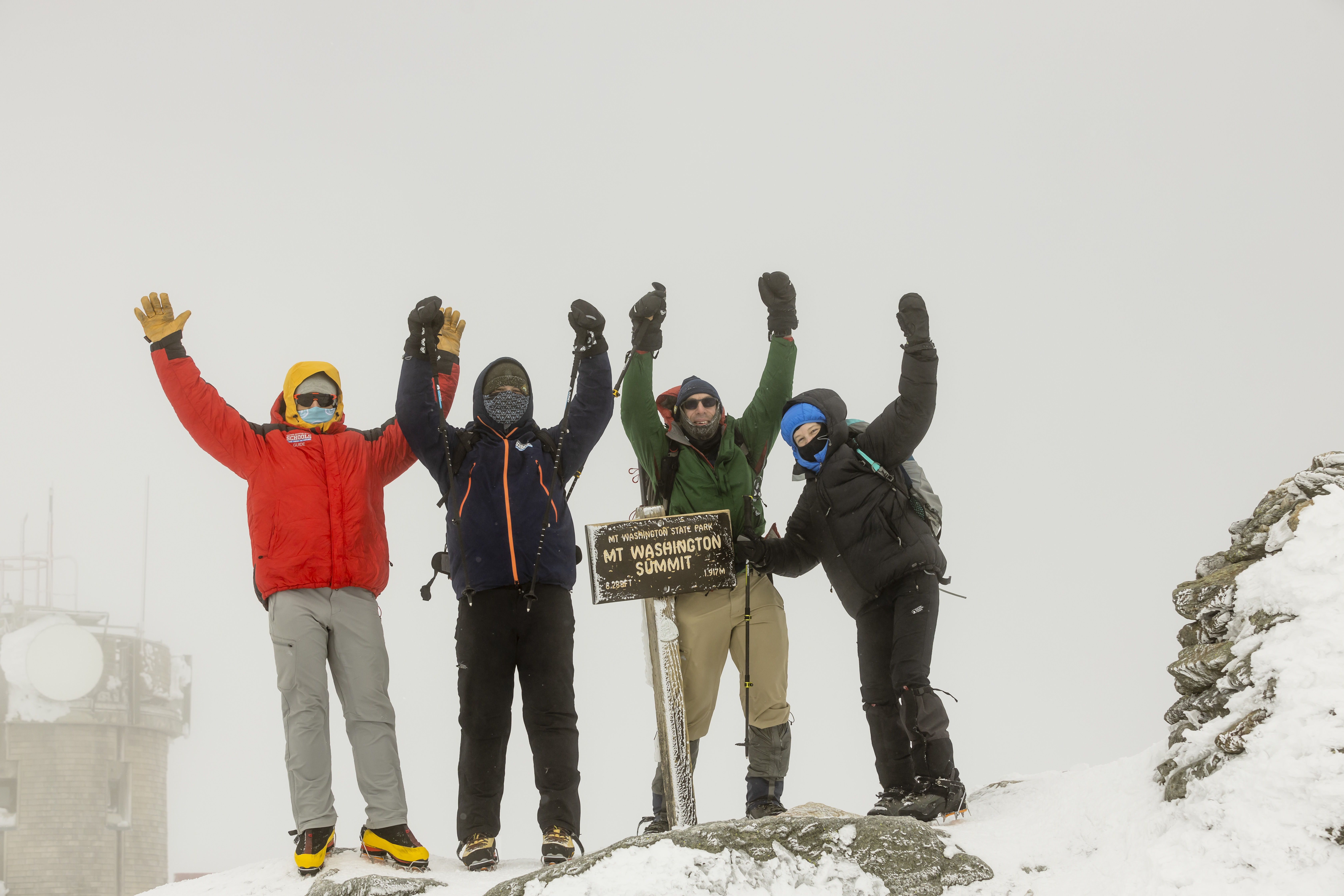
10 Pieces of Gear to Hike Mount Washington in Winter
1. La Sportiva Nepal Cubes
Your feet are what propel you up the mountain, so make sure you have footwear to keep them comfortable and moving. The La Sportiva Nepal has been the go-to boot for people ascending the Winter Lion Head for years. La Sportiva’s latest version, the Nepal Cube (men’s/women’s), offers a Gore-Tex liner to keep your feet dry, insulation to keep them warm, a rigid sole to easily attach crampons, and leather construction to withstand years of hard work.
2. EMS Merino Wool Hiking Socks
Good footwear includes more than just quality boots. The EMS Merino Wool Hiking Socks work perfectly with your mountaineering boot of choice, offering plenty of cushion, impressive moisture-wicking performance, and fantastic warmth. As a bonus, these socks come in packs of two, meaning you’ll have a clean pair for the next day’s outdoor adventure (assuming you have the energy after ascending and descending the Rock Pile’s 4,000 feet of elevation gain).

3. Petzl Vasak Flexlock Crampons
When the wind is raging and the summit cone is covered in blue ice, you want to ensure you stay connected to the ground. Petzl Vasak Flexlock Crampons are the perfect piece of gear for digging into the Rock Pile’s snowy and icy slopes—preventing unexpected slides and providing peace of mind when hit with the mountain’s notoriously powerful gusts.
4. EMS Ice Talons
Crampons are ideal for when you’re high up on Mount Washington, but overkill for much of the travel on its lower flanks. Here, the EMS Ice Talons excel. They offer stability and traction on the often slick hard pack, thanks to dozens of sharp points that dig into the frozen surface below. Even better, they work with a wide variety of footwear, so you can use them with your mountaineering boots to tick a White Mountain summit one day and your trail runners to navigate your glazed local loop the next.
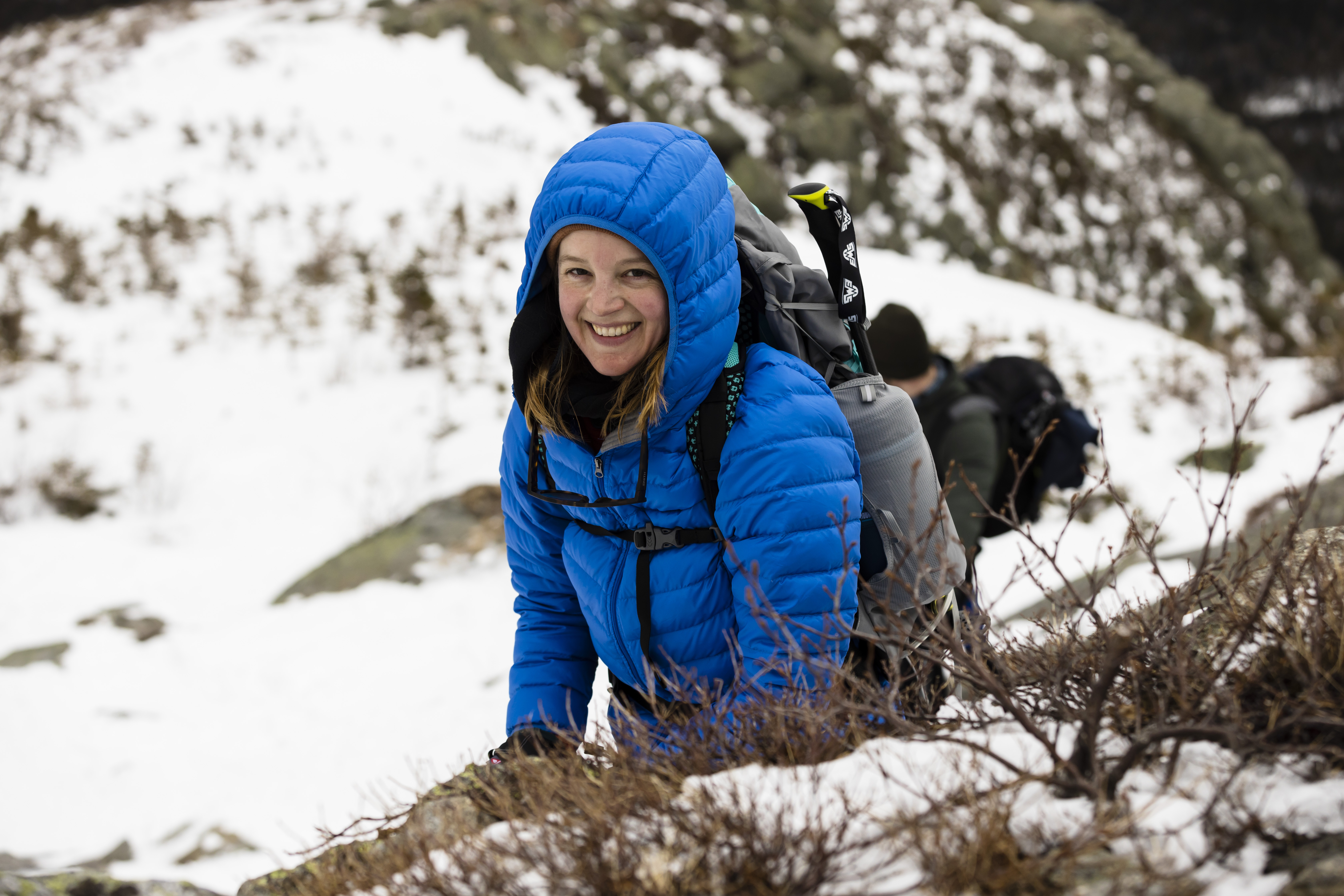
5. EMS Feather Pack Hooded Jacket
A big, warm, down puffy like the Feather Pack (men’s/women’s) is excellent at fighting off the biting wind and frigid temperatures commonly found above treeline. A generous amount of 800-fill goose down traps body heat without adding too much weight or volume to your pack, while a DWR-nylon face fabric takes care of blowing snow and ice without the need for an additional shell (unless it’s super windy, that is). The Featherpack features draft flaps, an adjustable hem, and an adjustable hood, all of which add up to even more warmth.
6. Smartwool Merino 250 Baselayers
Baselayers are the foundation of any good layering system, and they must breathe and wick moisture for the layers on top of them to function their best. Smartwool Merino 250 Baselayers—men’s (top/bottom) and women’s (top/bottom)—do all of those things while also feeling great against your skin. Even better, merino wool absorbs odors caused by bacteria, meaning you can wear your baselayers for a celebratory beer at the bar after your ascent and not have to worry about stinking up the joint.
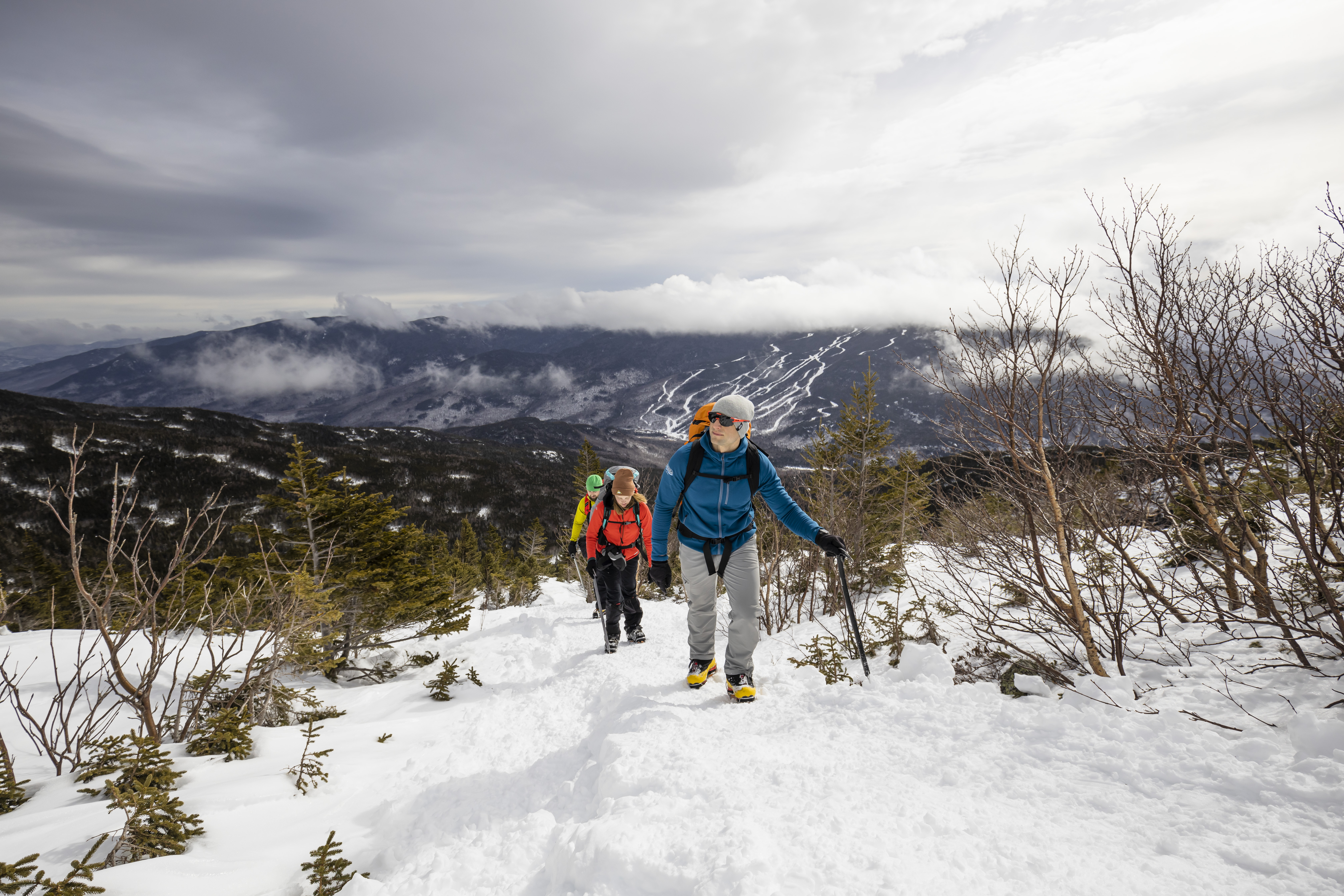
7. EMS Pinnacle/Empress Softshell Pant
Softshell pants like the EMS Men’s Pinnacle and Women’s Empress provide the perfect mix of weatherproofing, breathability, and warmth for hiking Mount Washington in winter—especially when paired with a wool baselayer like the Smartwool Merino 250 mentioned above. The EMS Pinnacle pants share their name with one of Mount Washington’s most notable features (and home of more than a few classic climbs): Pinnacle Buttress and Pinnacle Gully.
8. Outdoor Research Alti II Gore-Tex Mitts
Cold digits can quickly put an end to a winter hike of Mount Washington. In addition to a regular pair of gloves (or two), an oversized summit mitt like the Outdoor Research Alti II Gore-Tex Mitts (men’s/women’s) is sure to keep your hands warm when temperatures drop. The waterproof and windproof Gore-Tex outer shell provides durable protection from the elements, while the removable insulated PrimaLoft liner keeps your hands toasty—sounds pretty good for visiting a place known for having “the world’s worst weather,” doesn’t it?
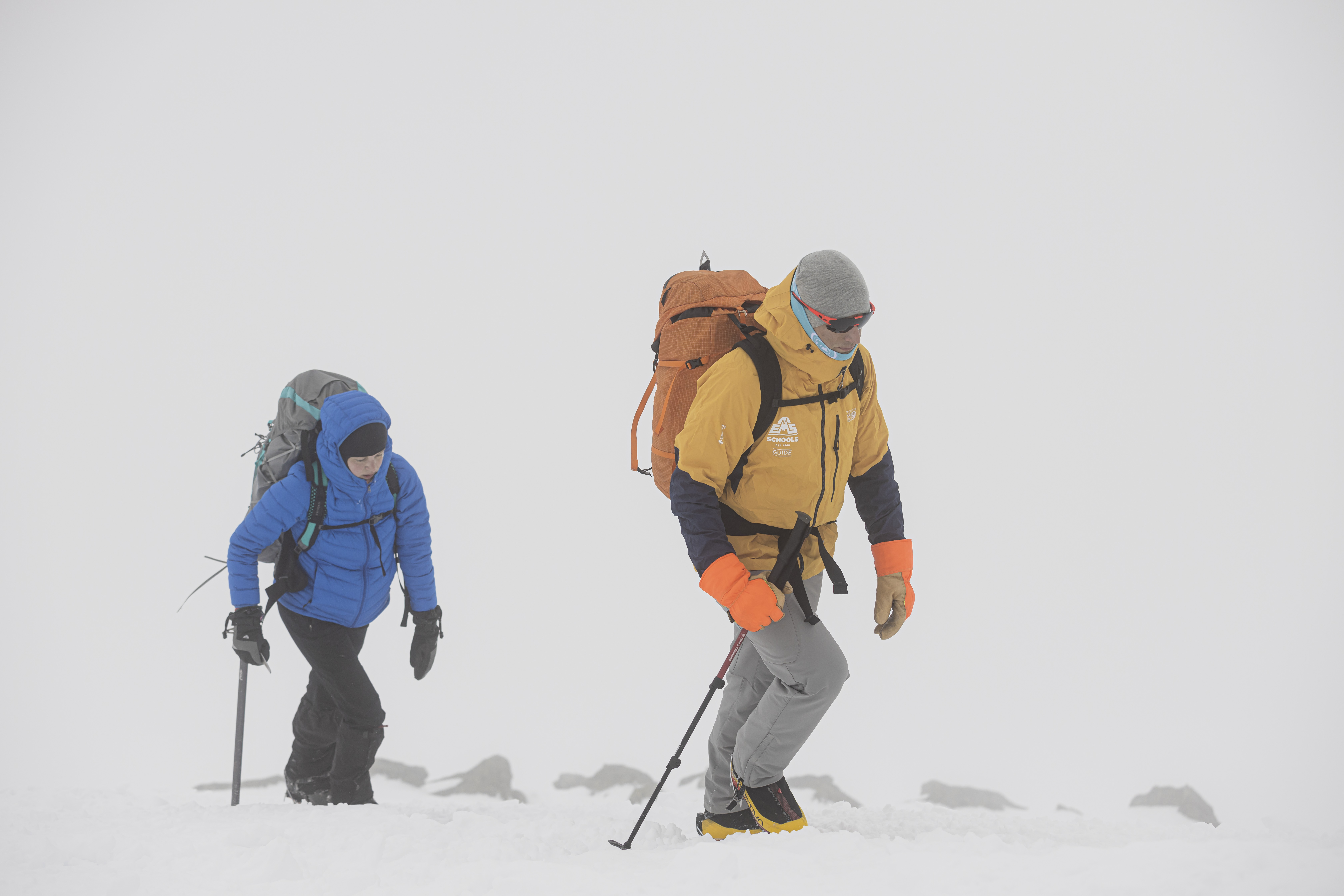
9. EMS Approach Trekking Poles
There are many great reasons to use trekking poles like the EMS Approach Trekking Poles. They provide stability when the wind is screaming and help keep you on your feet when traveling on icy and slick surfaces, all of which you’re likely to encounter on Mount Washington. Trekking poles also distribute weight to your shoulders and arms—taking a load off your knees and feet—which can be a blessing during long days on the Granite State’s iconic peak.
10. Other Essential Gear
Winter hiking is gear intensive—especially on a peak like Mount Washington—so don’t think of this as the complete list. Other valuable pieces of kit include:
- Neck gaiter/balaclava
- Winter hat (men’s/women’s)
- Goggles
- Handwarmers
- Headlamp
- Emergency bivvy
Depending on where you’re headed and the recent weather, you may even need to pack a pair of snowshoes.
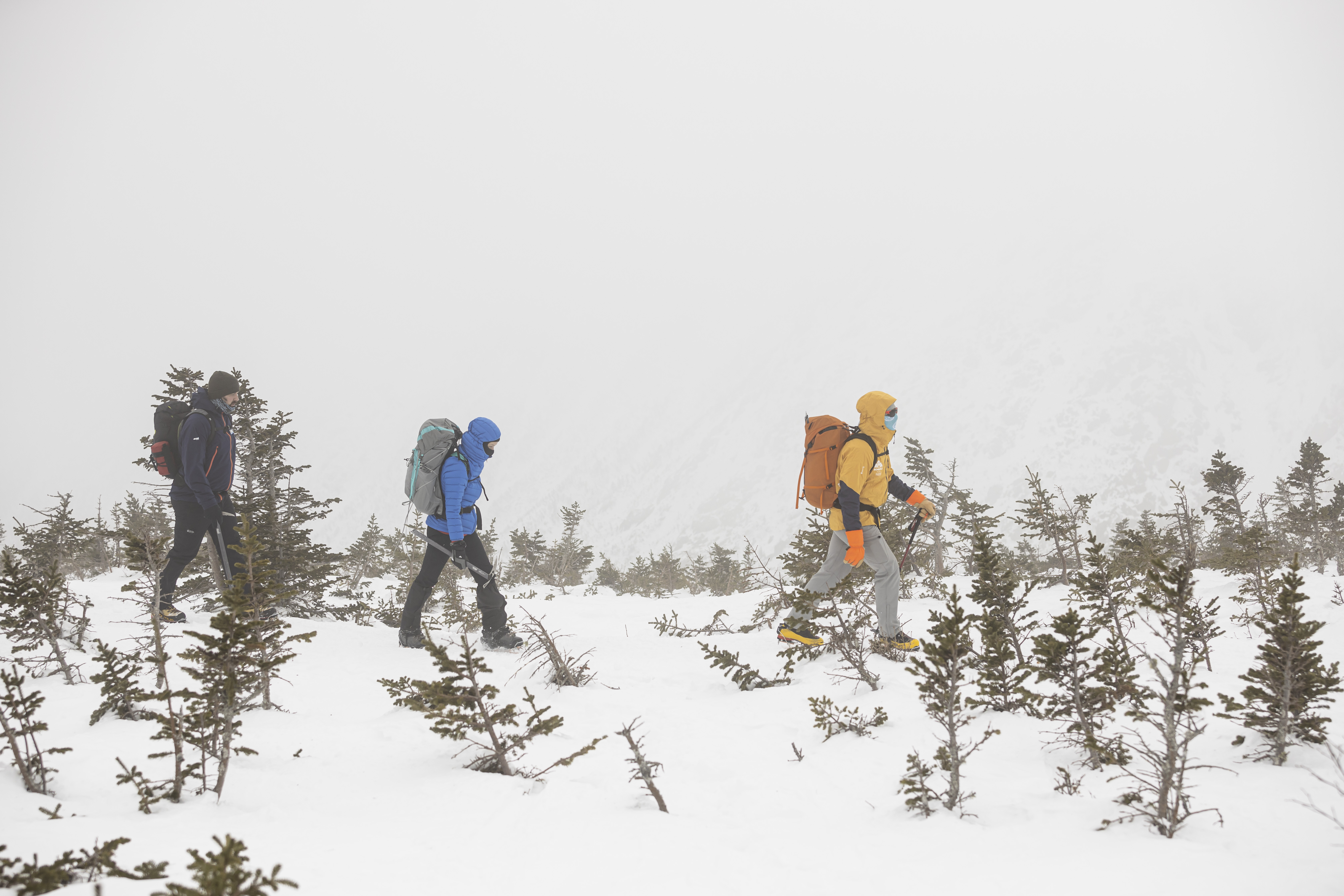
In Addition to Gear
It takes more than great gear to get to the summit of the Rock Pile. Make sure you’re up to the task by understanding the skills and having the know-how needed to climb the mountain safely. Once you’re geared up, spend some time studying the weather and current conditions to make sure you’re prepared. There are plenty of days on the mountain when even the most geared-up and experienced climbers should choose another objective.
When you’re ready to go, make sure that everything is packed and you’re ready for whatever the mountain throws at you. Whether you head up the Lion Head, the Ammonoosuc Ravine Trail, or another route, having the right gear and good decision-making will help keep you comfortable, improve your odds of summiting, and most importantly help ensure you return in one piece.




